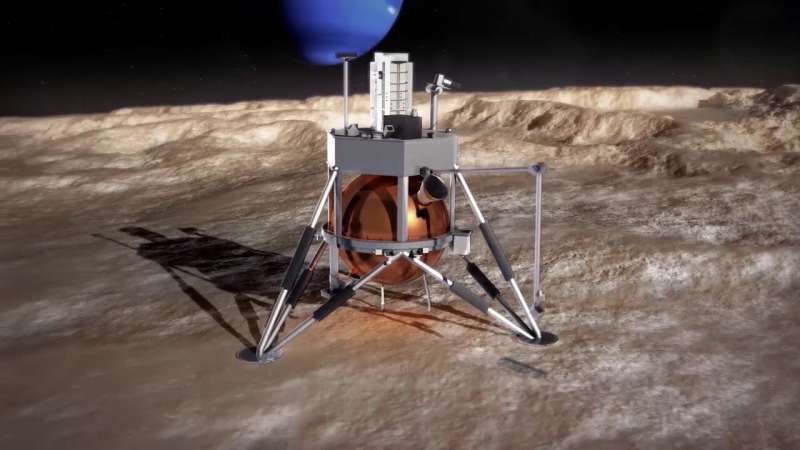Airbus and Astroscale UK Collaborate on Advancing In-Orbit Servicing and Space Debris Removal
Wednesday, 14 August 2024 15:44 Airbus Defence and Space and Astroscale Limited have signed a Memorandum of Understanding (MoU) to explore joint efforts in the realm of in-orbit servicing and space debris removal.
This collaboration seeks to combine the expertise of both companies to address the growing challenges of space sustainability and satellite longevity, with a focus on enhancing the UK's role in in-orbit servici
Airbus Defence and Space and Astroscale Limited have signed a Memorandum of Understanding (MoU) to explore joint efforts in the realm of in-orbit servicing and space debris removal.
This collaboration seeks to combine the expertise of both companies to address the growing challenges of space sustainability and satellite longevity, with a focus on enhancing the UK's role in in-orbit servici Senate bill would create center to study satellite interference with astronomy
Wednesday, 14 August 2024 15:22

Northrop Grumman continues to trim space workforce in California
Wednesday, 14 August 2024 13:28

How the Moon shaped our world: discover our interactive publication
Wednesday, 14 August 2024 10:00
How the Moon shaped our world: discover our interactive publication
Download the 2024 Small Satellite Conference Dailies Wrap-up
Wednesday, 14 August 2024 05:02

Intuitive Machines seeks to take over NASA’s VIPER lunar rover
Tuesday, 13 August 2024 23:46

GMV Secures GBP 2 Million Contract for Quantum-Enabled White Rabbit Switch to Safeguard UK Infrastructure
Tuesday, 13 August 2024 21:58 GMV has been awarded a GBP 2 million contract by Innovate UK to develop the White Rabbit Switch, an advanced hardware solution designed for fiber-optic time distribution. This technology is crucial for enhancing the resilience of the UK's infrastructure. The project is part of Innovate UK's quantum-enabled positioning, navigation, and timing competition. GMV will spearhead the development, colla
GMV has been awarded a GBP 2 million contract by Innovate UK to develop the White Rabbit Switch, an advanced hardware solution designed for fiber-optic time distribution. This technology is crucial for enhancing the resilience of the UK's infrastructure. The project is part of Innovate UK's quantum-enabled positioning, navigation, and timing competition. GMV will spearhead the development, colla Northrop Grumman Completes Static Test of Digitally Engineered Rocket Motor
Tuesday, 13 August 2024 21:58 Northrop Grumman Corporation's (NYSE: NOC) digitally engineered large solid rocket motor has successfully undergone a static fire test at the U.S. Air Force Arnold Engineering Development Complex.
The test met all objectives, with performance data affirming the digital model and confirming the motor's capabilities. This accomplishment underscores the company's proficiency in meeting design
Northrop Grumman Corporation's (NYSE: NOC) digitally engineered large solid rocket motor has successfully undergone a static fire test at the U.S. Air Force Arnold Engineering Development Complex.
The test met all objectives, with performance data affirming the digital model and confirming the motor's capabilities. This accomplishment underscores the company's proficiency in meeting design BeZero Enhances Carbon Ratings Using Planet Labs Forest Data
Tuesday, 13 August 2024 21:58 Planet Labs PBC (NYSE: PL), a prominent provider of Earth data and insights, is collaborating with BeZero Carbon, a global ratings agency specializing in carbon markets. This partnership enables BeZero to utilize Planet's data to help market participants assess risk in carbon investments, transactions, and claims.
BeZero is the first to employ Planet's Forest Carbon Diligence product, whic
Planet Labs PBC (NYSE: PL), a prominent provider of Earth data and insights, is collaborating with BeZero Carbon, a global ratings agency specializing in carbon markets. This partnership enables BeZero to utilize Planet's data to help market participants assess risk in carbon investments, transactions, and claims.
BeZero is the first to employ Planet's Forest Carbon Diligence product, whic NASA C-20A Completes 150 Hours of Earth Science Flights
Tuesday, 13 August 2024 21:58 This summer, NASA's C-20A aircraft successfully completed over 150 hours of science flights across two months, collecting critical Earth science data despite various challenges. Operating internationally, the aircraft conducted missions across several countries in support of global research efforts.
Based at NASA's Armstrong Flight Research Center in Edwards, California, the C-20A has been
This summer, NASA's C-20A aircraft successfully completed over 150 hours of science flights across two months, collecting critical Earth science data despite various challenges. Operating internationally, the aircraft conducted missions across several countries in support of global research efforts.
Based at NASA's Armstrong Flight Research Center in Edwards, California, the C-20A has been A hopper could explore more than 150 km of Triton's surface in two years
Tuesday, 13 August 2024 19:27
Neptune's largest moon, Triton, is one of the most biologically interesting places in the solar system. Despite being hard to reach, it appears to have active volcanoes, a thin atmosphere, and even some organic molecules called tholins on its surface. However, Voyager only visited it once, in passing, 35 years ago.
Technology has advanced a lot in the intervening decades, and a new push for a lander on Triton specifically has been garnering attention. One such mission was described by Steve Oleson and Geoffrey Landis of NASA's Glenn Research Center.
Their concept mission, known as Triton Hopper, was funded by NASA's Institute for Advanced Concepts (NIAC) back in 2018 and utilized a cryogenic pump to extract propellant from Triton's surface to power a "hopper" that could travel up to 5 km a month, and do some fascinating science along the way.
The first challenge to any mission on Triton is getting there.
Terran Orbital removes Rivada constellation from revenue backlog
Tuesday, 13 August 2024 18:34

Lockheed Martin taps General Dynamics for solid rocket motor manufacturing
Tuesday, 13 August 2024 17:50






